How to Grow Broccoli for Beginners
This article will walk you through all the steps for how to grow broccoli for beginners. From planting, tending, and harvesting by the end you will be confident to add this veggie to your own backyard garden.
Bookmark this page so your gardening 101 resources are complete!
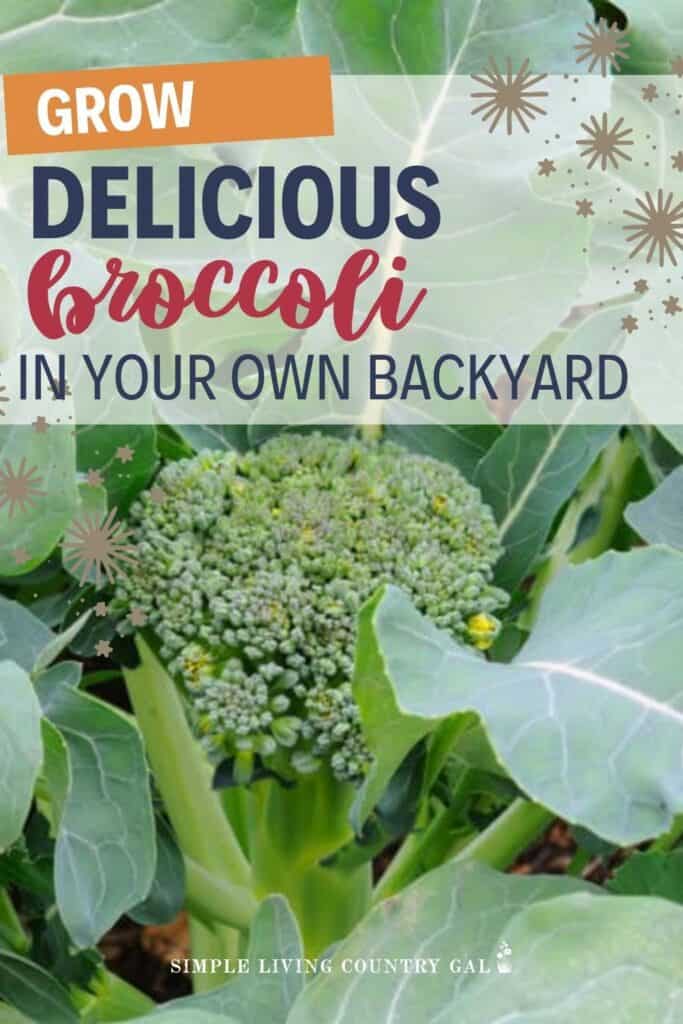
Broccoli was one of those vegetables I hated as a child but absolutely loved as an adult. I am not sure why that is, but I think it might have to do with the fact that my younger self only ever saw broccoli raw on a vegetable tray sitting out before Thanksgiving dinner.
Now I know better and I try hard to incorporate broccoli into a handful of dinner recipes each week.
If you love broccoli and you’re just starting to garden, good news . . . growing broccoli is very easy for beginners. The better news is you can harvest it several times making it a crop that continues to produce throughout the growing season.
And, the best news is it is amazingly good for you as it’s crammed full of nutritious value, rich in vitamins and minerals. It’s also a good source of potassium, folic acid, Vitamin A, fiber, and iron.
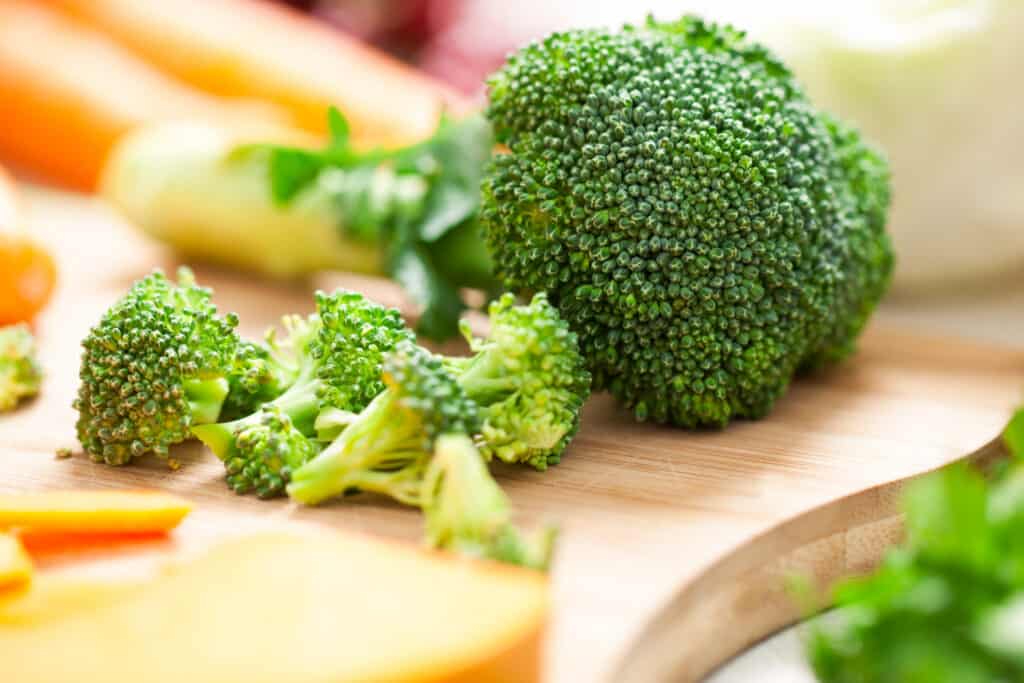
If you have never grown broccoli or have had a bit of bad luck with it, this article will walk you through the planting basics, who to grow organically, and harvest and storage tips that will help you to enjoy your broccoli all year long.
A few things to know before starting.
Broccoli grows best in cooler weather, making it the perfect crop for spring or fall. It does take a bit longer to mature than most vegetables so you’ll need to be patient, but it’s worth it. From planting to harvesting, you can expect broccoli to take anywhere from 80 to 100 days. Once matured though, it will often keep producing smaller side shoot plants that you can enjoy for several months and another 2 to 3 harvests.
What You Need to Grow Broccoli
Broccoli requires sun exposure for at least 6 to 8 hours a day so choose a spot that gets plenty of sunlight. Without enough light, your broccoli won’t mature into healthy plants. Instead, it will wilt and turn into scraggly leaves.
You’ll also want an area where the soil is fertile, moist, and drains well. For best results, plan on working 2 to 4 inches of rich compost or a thin layer of manure into your soil before planting.
Square Foot Garden Planner+Guide

How to Grow Broccoli for Beginners
There are several varieties to choose from with broccoli. Many are heat-tolerant which can be a good choice for warmer climates. And a few are good choices if you plan to freeze the broccoli for later. Choose one that best suits your climate and garden area.
A few of the more common broccoli varieties include:
- Flash – a fast-growing, heat-resistant hybrid. This plant produces good side shoots once the main head is harvested. It’s good for both spring and fall planting.
- Calabrese – this variety produces large heads and side shoots that will mature after the first harvest.
- Green Goliath – this is a heat-tolerant variety that produces large heads and side shoots.
- Green Magic – another heat-tolerant variety that freezes well.
- Green Duke – a heat-tolerant and early variety that works well for Southern gardens.
- Paragon – has extra-long spears and is an excellent choice for freezing.
When to Plant Broccoli
When growing broccoli you want to aim for cooler weather. This means it should be started in late winter or early spring for an early summer harvest. You can also plant in mid to late summer for a fall harvest. Planting twice a year with 2 to 3 harvests at each planting allows you to have broccoli almost all year long. And if you choose a variety that freezes well, you can enjoy your harvest throughout the year.
For spring plantings, broccoli seeds can be started indoors or outside a few weeks before the last frost. For indoor planting, start your seeds 6 to 8 weeks before the last frost and for outdoor planting, sow your seeds 2 to 3 weeks before the last frost or as soon as the soil can be worked.
Fall plantings are best for warmer climates. For this, sow your seeds outdoors about 80 to 100 days before the first frost of fall. The soil and ambient temperatures will be high, but will drop in time for the broccoli heads to mature nicely.
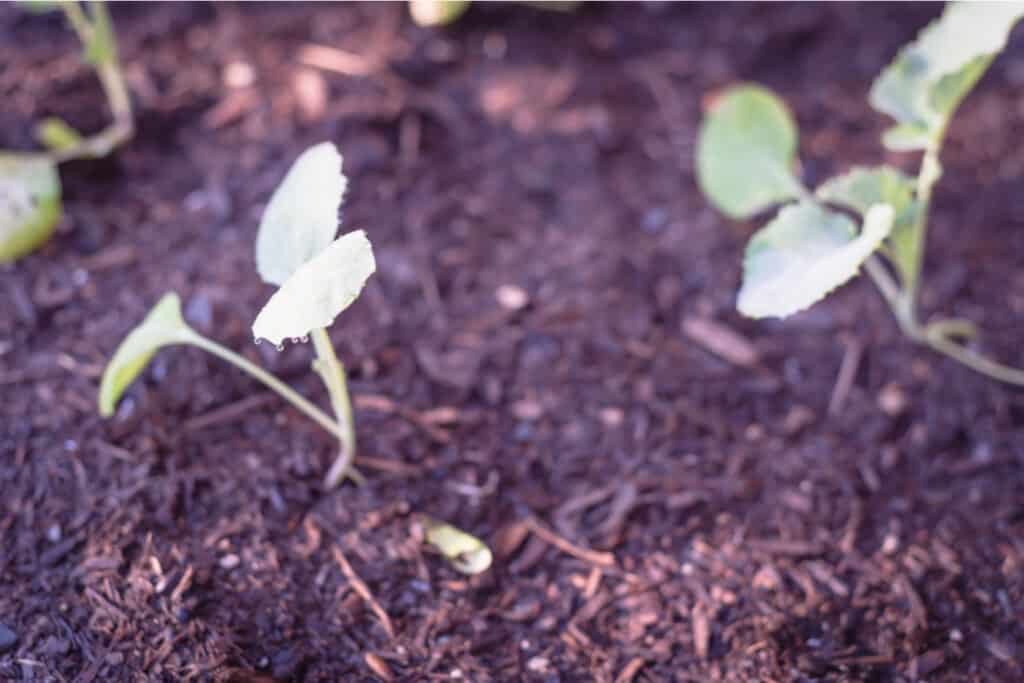
Seeds or Seedlings
With broccoli, you can start seedlings inside 6 to 8 weeks before the last frost then transplant them outdoors once the soil temperature reaches at least 40° F and you can easily work the soil. You can transplant your seedlings up to a couple of weeks before the last frost or shortly thereafter.
If you have never started seeds indoors, you can use a seed system to get started. A few things to remember with seed starting is to be sure you have a warm enough area, enough light, and water things correctly.
Read How to Start Seeds Indoors for more tips. This article is on tomato plants but the same applies to all plant care when starting.
With seeds, you’ll need to wait until the soil is warm enough to work and at least 40° F but you can start planting 2 to 3 weeks before the last frost.
Either way, the plants will mature nicely and the roots are strong enough for transplanting.
How to Plant Broccoli
If you’re planting outdoors, sow your seeds about a ½ inch deep and about 3 inches apart. Once the seedlings sprout and are 2 to 3 inches in height, thin them out so that the plants are about 12 to 20 inches apart. This will give the heads plenty of room to mature.
If you started your seeds indoors, transplant your seedlings when they are 4 to 6 weeks old and have about 4 to 5 leaves. Since they’ve already sprouted, plant them 12 to 20 inches apart in holes that are slightly deeper than the containers you started them in. This way, you won’t need to thin them out later on.
Be sure to give your seeds a good watering at the time of planting to encourage the seeds to start sprouting.
How Many Plants to Plant
Broccoli can be harvested 2 to 3 times for up to 3 months. The first head will be the largest with several smaller heads growing over the weeks after the first harvest.
For a decent harvest, you’ll want to plant 3 to 5 plants per person in your household. By doing the math you will get a better idea of how much room you will need to grow a full harvest for your family to enjoy.
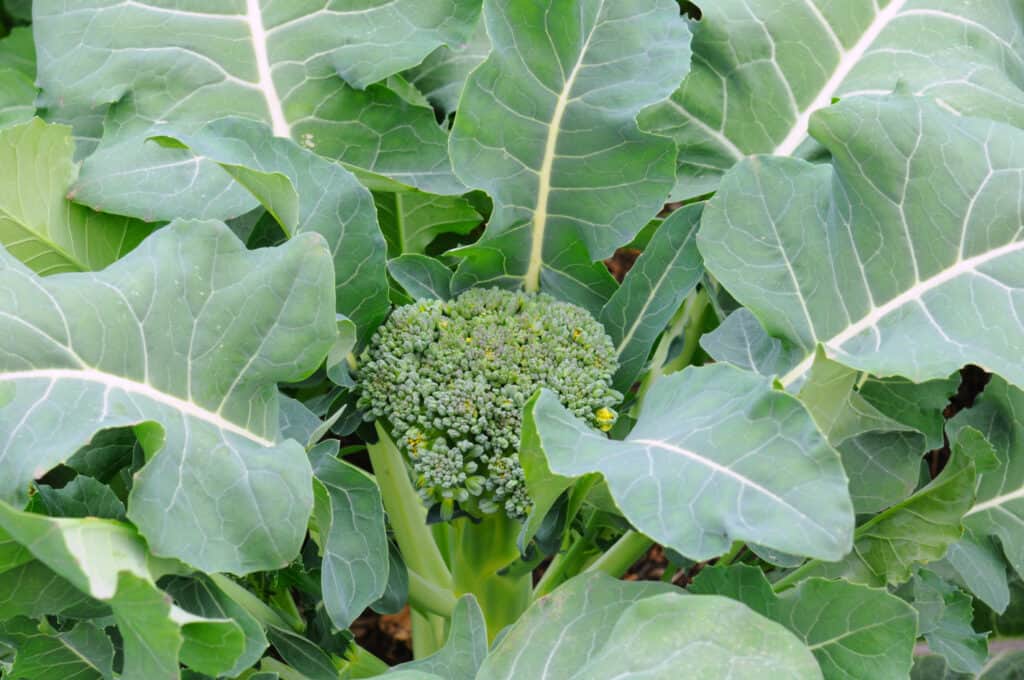
How Long Does Broccoli Take to Grow?
Broccoli will take anywhere from 80 days to 100 days from the time of planting until it’s ready to harvest. The exact amount of time will vary based on the variety you plant and your natural climate. Generally speaking, it will take a shorter amount of time to harvest if you start your seeds indoors and transplant them. With this method, it should take 55 to 90 days to be ready to harvest.
Temperature
Broccoli prefers cooler temperatures. Temperatures that are too high will affect the development of the broccoli head and it won’t mature as well. Planting in late winter to early spring or in mid to late summer for a fall harvest will protect the heads from forming during the high temps of the summer heat.
Broccoli seeds can germinate in soil as low as 40° F, but warmer soil will help to speed up the growth.
For the growing season, broccoli plants thrive in temperatures of about 65° F to 70° F.
Garden Tool Set, Stainless Steel Heavy Duty Gardening Tool Set, with Non-Slip Grip, Storage Tote Bag, Outdoor Hand Tools, Ideal Garden Tool Kit Gifts for Women and Men




Sun
Broccoli needs 6 to 8 hours of direct sun a day in order to mature. Choose a spot in your garden that gets plenty of light. You can choose the best spot by tracking how many hours of sun each area of your garden gets in a day for at least a week and choose your planting area based on your tracking information.
Soil
Broccoli matures best in soil that’s nutrient-rich, moist, and has good drainage to prevent root rot. Test your soil’s pH level and choose an area that’s slightly acidic with a pH between 6.0 and 7.0.
Water
Broccoli needs consistent moisture in the soil without overwatering. Water at least 1 to 1 ½ inches per week. Test that the soil is moist by sticking your index finger in it. It should be moist up to your first knuckle.
Don’t get the developing heads wet when you water, it will encourage rot. Try to water the soil without watering the plants directly.
Fertilizing
Fertilize broccoli about 3 weeks after transplanting seedlings or about 3 weeks after thinning out seedlings that were started outdoors using a low-nitrogen fertilizer.
Spacing
Broccoli seeds should be planted at about 3 inches apart, but thinned to about 12 to 20 inches apart once the seedlings sprout to give the head plenty of room to grow. Spacing any closer will produce smaller heads.
Keep your rows about 3 feet apart, again for plenty of spacing for the heads to mature.
Depth
When planting seeds, they should be planted at about a ½ inch deep but when planting seedlings that you started indoors, plant them slightly deeper than the container you started them in.
Growing Broccoli Tips
- Broccoli roots are very shallow so try not to disturb them. If you develop weeds, suffocate them with mulch instead of pulling them, especially if they are close to a plant.
- Mulching around the plants will help to keep the soil temperature down.
- Row covers will help to minimize pests.
- After the first harvest, maintain a regular feeding and watering schedule to encourage a second harvest.
How to Harvest Broccoli
When the heads are fully matured, you’re ready to harvest. Harvest your broccoli heads in the morning; the buds will be firm and tight. If you start to see yellow petals, harvest your broccoli immediately. This is a sign that your broccoli quality is starting to decrease and it will happen quickly.
Cut the heads from the plant along with about 6 inches of the stem. Make a slanted cut on the stalk, this will allow water to roll away. If the water doesn’t roll off, it can pool and rot the center of a flat cut stalk, reducing the chances of a second harvest.
Most varieties will have side shoots that will continue to mature after the main broccoli head is harvested. You can continue to harvest from one plant for several weeks. Depending on your climate, you may be able to harvest from spring to fall if your summers aren’t too hot.
How to Store Broccoli
Broccoli doesn’t last long so plan to consume it within a few days of harvesting. Store it in the refrigerator for up to 5 days, washing it first and making sure it’s fully dry. It can also be blanched and frozen for up to a year.
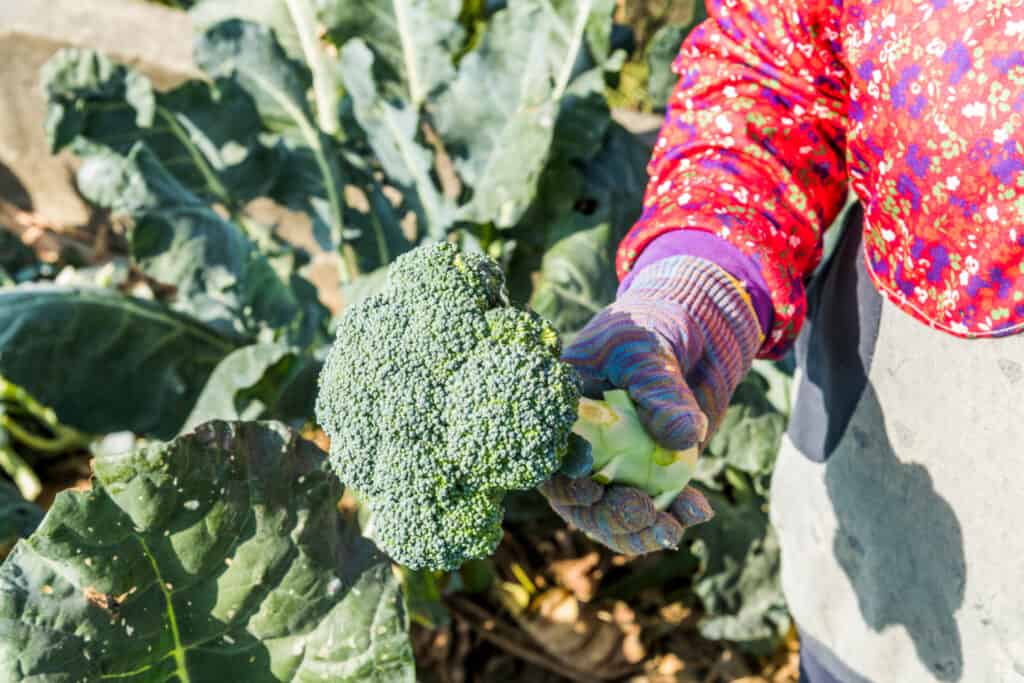
What Diseases and Pests to Watch For
There are several diseases and pests to keep an eye out for. These are the most common:
Aphids – If you notice curling leaves, it could mean that these insects are sucking the plant’s sap. Apply soapy water to the leaves when you see aphids.
Cabbage loopers – Small holes on the leaves between the leaf veins mean you have these small caterpillars. They usually hang out on the underside of the leaves so turn the leaves over to find them then hand pick them off if there aren’t too many. You can also use a natural, bacterial pesticide. Placing a floating row cover over your plants just after planting until it’s time to harvest will prevent caterpillars.
Clubroot – If your plants start to quickly wilt, you may have this fungus in your soil. The entire plant, including the root, will need to be gently dug up as quickly as possible and removed from your garden. If the roots are gnarled and misshapen, you know that clubroot is your problem. Completely remove the plant so the fungus doesn’t continue to live in the soil. Don’t compost these plants. If clubroot is your issue, you’ll need to raise your soil’s pH to above 7.2 and you may need to sterilize your soil to get rid of it.
Downy mildew – This shows as yellow patches on the leaves and it’s usually caused by moist weather. Keep the leaves as dry as possible and make sure there’s plenty of air circulation.
Nitrogen deficiency – If you notice the bottom leaves turning yellow, the plants need a high nitrogen but low phosphorus fertilizer. You can also use blood meal which is a quick fix for yellowing leaves.
Broccoli is a great option for beginner gardeners. It’s easy to grow, can be harvested several times, and can be grown over a longer period of time, even planted twice a year. It also provides plenty of nutrients to your family and can be incorporated into so many meals. Whether you mix it into pasta, toss it on top of a potato, or roast it with chicken, it’s delicious and healthy.
Growing broccoli is a great way to get your garden started.









